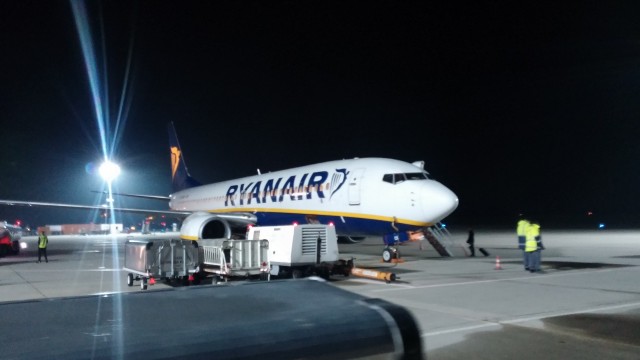
Ryanair Boeing 737-800 – Photo: Steven Paduchak
That’s right, people, it happened! Last weekend, I flew Ryanair with my buddy Dan. It was a quick weekend getaway from Frankfurt to London. We’re here in Germany on a semester abroad, and neither of us had been to the United Kingdom. Before coming over “the pond”, we knew it was on the list of places to visit.
It all started on a Wednesday afternoon. We booked the trip a few weeks prior, and we were counting down the days. We all know Ryanair. They’re known for having the cheapest airfare in the industry; making the airline beloved here in all of Europe. The Dublin-based air carrier offered us each a forty euro (yes, you read that right) roundtrip from Frankfurt to London. That’s a huge deal, flying between two major European markets.
I knew after a deal this unbelievable, there’d be some sort of catch. In the end, there definitely was. Left and right, we were advised we had to pay for everything; printing off boarding passes, seat selection, food, etc… Being cautious of something like this, we came well prepared with food and boarding passes already printed off, so we managed to avoid all the imposed fees.
The day finally came, and we were on our way. To our surprise, however, the airport we flew out of was FOREVER away. It was one of the biggest catches we didn’t realize until our journey. The airline flies into the smaller and medium-sized airports in order to avoid the hefty landing fees imposed by the major international locations. This is completely understandable – we all want to save money whenever we can, right?
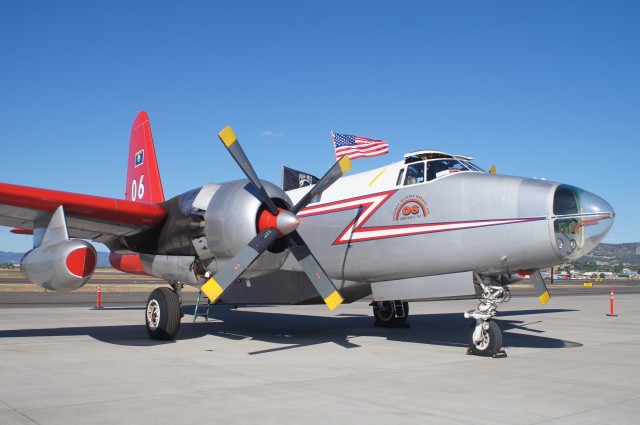
06 Lockheed P2V fire-fighting aircraft – Photo: Julian Cordle
Fall brings cool, wet weather, which serves as a huge relief to areas devastated by the 2014 US wildfire season. In the last sixty days, a number of high-profile tragedies have highlighted the dangers of wildfires. In September, the town of Weed, California was nearly wiped out by the vicious Boles Fire, which destroyed over 150 homes and buildings. Just a few weeks ago, CalFire Pilot Craig Hunt was killed when his S-2 tanker crashed while fighting the Dog Rock Fire near Yosemite National Park.
In the spirit of respect and appreciation for the efforts of all forest firefighters, aerial and “ground-pounders” alike, AirlineReporter offers this two-part series on Aerial Firefighting.
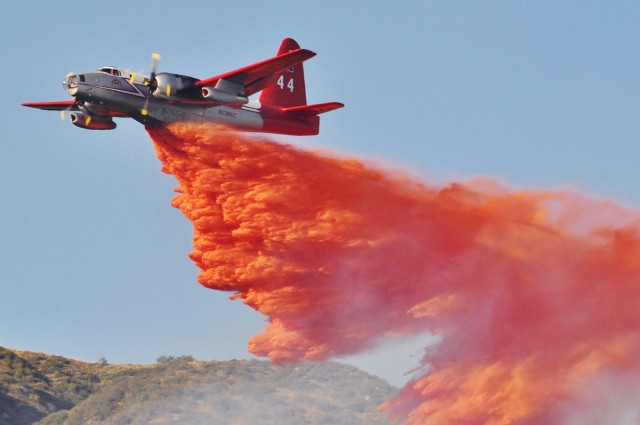
P2V Neptune fire tanker dropping borate fire retardant on the mountainside in an effort to contain a wildfire – Photo: Jeremy Ulloa
The 2014 fire season began with a bang, as an early season fire in Alaska consumed nearly 200,000 acres before a badly needed weather system put it to rest. About the same time, a vicious collection of fires raged through heavily populated areas of Southern California. All of this took place before we had even seen the first day of June.
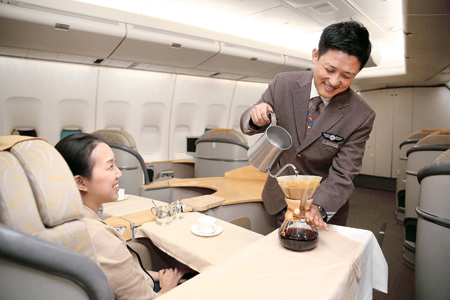
An Asiana Airlines senior purser makes hand dripped coffee during an onboard service Photo: Korea Times/Asiana Airlines
Like most people I know, I started my morning off with a good cup of coffee. I am not a fancy latte man; just a nice cup of black coffee does me well. While reading with my coffee the other day, I came across an article on Asiana from the Korea Times. The article talked about a new Hand-Drip Coffee service that is only on offer onboard Asiana Airlines in first class. You might be thinking ’œso what? Other airlines have espresso, why go for hand-drip?” Well, for someone like me, hand-drip coffee is pretty damn great.
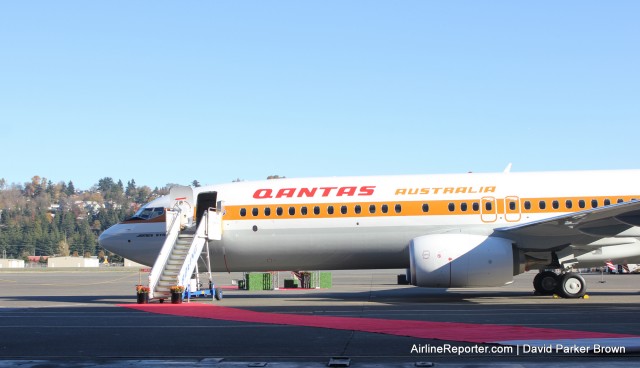
The Qantas’ retro livery on their new Boeing 737
I always love being invited to celebrate a new delivery for an airline, but I wasn’t sure how Qantas might make a 737 delivery special. There have been over 8,000 of the aircraft type delivered and Qantas is already operating 74 737s.
Of course, the big deal about this 737-800 (VH-XZP) is that it is in a retro livery. A livery that flew on the airline from 1974-1981. That is a good start.
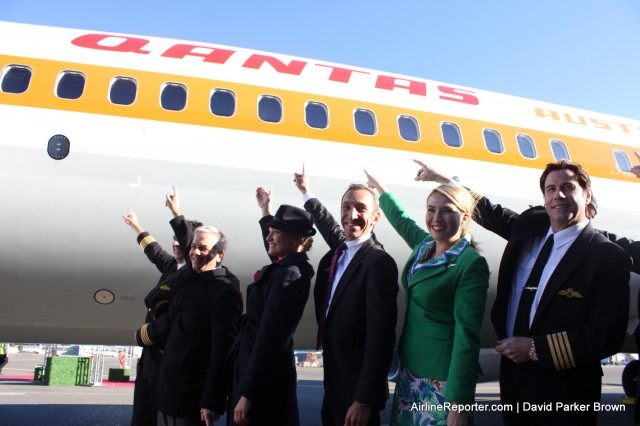
John Travolta showed up and celebrated with Qantas
However, because of all the mindful AvGeeks out there, photos of the new livery have been on the internet for a week. How was Qantas going to make this celebration really stand out?
They were able to use this opportunity to celebrate the 70th anniversary of the kangaroo being used as their logo and this month is also their 94th birthday. All great things, but I think overall there were two things that really made this event work: a shiny disco ball and John Travolta.
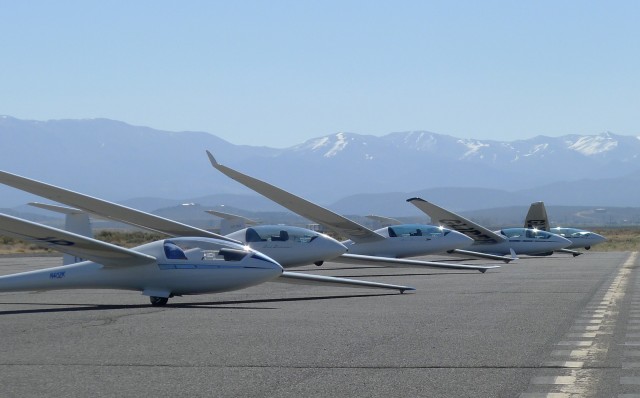
Soaring NV’s gliders at Minden-Tahoe Airport – the LS4, two Duo Discus, two ASK-21s
Photo: Soaring NV
I’ve been waiting for you!
I’m glad that you decided to come along with me for a flight in Soaring NV’s LS4 glider. I promised you a ride in Gone Gliding, Part One, didn’t I? Yes, the LS4 is just a single-seater, so we’ll use a ’œmind-meld’ for you to enjoy the flight. Let’s hop into a golf cart with Spencer, who’ll be our ground crew, and head over to the glider staging area near the threshold of Runway 30, here at Minden-Tahoe Airport (MEV).
While Spencer drives us over, he’ll be making radio calls on his handheld to update air and ground traffic with our progress along the taxiways and across the runways. MEV doesn’t have a control tower, and it’s important that we communicate as we go. So I’ll tell you what I’ve been up to, before you arrived.
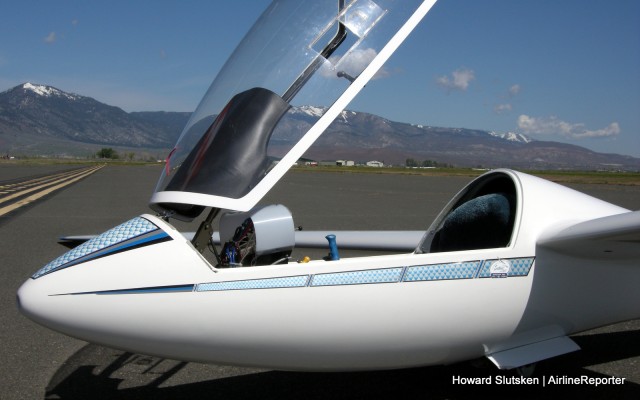
The LS4 waits for us in the staging area near the threshold of Runway 30. I only left the canopy up long enough to quickly take this photo on a no-wind day – a strong breeze could smack it down and damage it.
I’ve checked the weather, and had a good look at the soaring forecast. The National Oceanic and Atmospheric Administration (NOAA) publishes a daily forecast for the Reno area that gives glider pilots an idea of the lift, temperatures, and winds aloft for the day. It’s a beautiful afternoon in the Carson Valley, warm, with just a few puffy cumulus clouds out there around 14,000 feet above sea level (ASL). I’ve also talked with a couple of pilots who’ve just landed, and they told me that there’s some booming thermals just a couple of miles east of the airport. Great!
Spencer towed the glider over from the ramp earlier today, and I’ve done the pre-flight. That included a walk-around inspection and a full test of the flight controls and connections. I’ve also made sure that the oxygen cylinder in the glider is full, the battery is properly connected, and adjusted the seatback, because it can only be moved before you get in the cockpit. The seat bottom doesn’t move, but the rudder pedals are adjustable, and I’ve moved them into position. The last pilot must have been a lot taller than me. Spencer hooked up the GPS logger, which will keep track of our position, speeds, and altitudes of our flight. Once we’re back on the ground, we’ll transfer the data to a computer, and review the flight.







